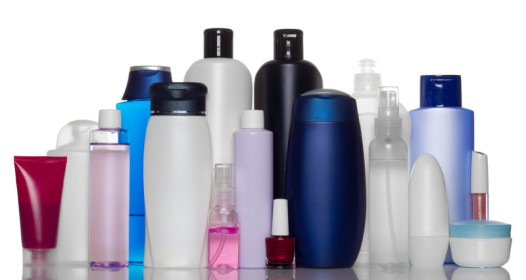
In the spirit of All Hallows Eve, I am going to terrify you.
I joke. But in all seriousness, there are some unsettling facts about the U.S. skincare industry. Here are some numbers that may scare you more than black cats and chainsaws. (Full disclosure: I represent a company that makes safe personal care products — hence my recent interest and research into them.)
Back to those scary numbers. The United States has not passed a law regulating the skincare and cosmetics industry since 1938.
That’s right. 1938. Franklin D. Roosevelt was president and we were fighting World War II. How many chemicals have been introduced into commerce since then? Glad you asked. Approximately 80,000 new ingredients have been formulated since 1938 and only a small fraction of these have ever been tested for safety in humans.
Are they all harmful? No. But they aren’t all benign, either. We already are aware of quite a few ingredients that are linked to allergies, cancer, hormone disruption and the like, and many of these aren’t currently banned by the federal government. Think about how much our knowledge of health has evolved since 1938. Back then, trans-fats and margarine had recently been introduced and were gaining popularity. We were still oblivious to the perils of cigarette smoking. The first Surgeon General’s report wasn’t released until 1964. The bottom line: 1938 was a very, very long time ago, people.
The European Union bans more than 1,400 ingredients in personal care products. The United States bans a total of 11.
Eleven. You can count these 11 ingredients on your fingers (and one toe). Here, skincare and cosmetic companies are essentially in charge of policing themselves. Yikes. And you were worried about sugar this Halloween. The good news is that a handful of companies are taking that self-policing job seriously. Until federal regulations improve, make sure you are checking the labels on the products you choose.
In 2007, 61 percent of lipsticks tested were found to contain lead ranging up to 0.65 parts per million (ppm). In 2009, the FDA found 95 percent of lipsticks contain more than 0.1 ppm lead.
Lead in lipstick was thought to be a myth until recently. A 2007 study performed on 33 lipsticks by the Campaign for Safe Cosmetics initiated a follow-up study by the FDA in 2009. This study looked at 400 lipsticks sold in the United States. Lead was found in every sample of lipstick tested, ranging from 0.09 to 3.06 parts per million. And 380 of the 400 lipsticks contained more than 0.1 ppm of lead — the maximum amount of lead permitted in processed food and candy bars, according to the FDA. Despite these findings, the FDA has not set any limits for lead in cosmetics (It does limit lead to 20 ppm in color additives). It is true that we are not intentionally ingesting our lipsticks or chapsticks like we are our food. But some lip products will inevitably be swallowed (watch your toddlers). And what about the absorption on lips and skin when we apply and later re-apply lip products?
Lead wasn’t the only heavy metal discovered in lipsticks. Other fun stuff like cadmium and aluminum also were present. The real question remains: Is any level of this stuff OK? I personally stick to clean, safe products when I can. Even if these seemingly minuscule dosages of heavy metals aren’t proven to be toxic in a single dose, what about the cumulative effect of years of use?
At the end of the day, why does a tomboy like myself, who doesn’t use a ton of make-up products, even bother worrying about what’s in a lipstick? Well, for starters, the few make-up products that I do use, I use everyday. And most of the women I know and love use multiple make-up products everyday. And remember, we aren’t just talking about weak regulations governing cosmetics here, but all personal care products, including shampoo, soap, lotion, sunscreen, deodorant, toothpaste.
As with anything in life, it’s all about moderation. Once the craziness of Halloween, Voodoo Fest, and Black Pot subsides this weekend (and we all come down from our sugar high), let’s take a look at the products we use daily on our skin. Start with one product you use consistently and do some research. The Environmental Working Group is a great resource to use to look up products and ingredients. Check out its website http://www.ewg.org/ and handy Skin Deep app for your smartphone. The app rates more than 64,000 products, giving each a 0 to 10 rating based on ingredients. Products can be scanned via barcode or typed into a search engine.
If it turns out that some of the products you have been using are a little scary, find better alternatives and slowly replace them. This Halloween season, treat your skin, instead of tricking it.
 NOLAbeings Multimedia artist Claire Bangser created NOLAbeings as a portrait-based story project that marries...
NOLAbeings Multimedia artist Claire Bangser created NOLAbeings as a portrait-based story project that marries...  Voodoo in New Orleans: Reviving history: New Orleans fortune telling This article takes a deep dive into the history of Voodoo in New Orleans, its hybridization with Catholicism, and its present-day place in the city's culture. The author visits fortune-tellers in the French Quarter, using their guidance as a tool for introspection rather than a deterministic predictor of the future. Through her experiences in New Orleans, the author feels a mystical connection to both the past and the future.
Voodoo in New Orleans: Reviving history: New Orleans fortune telling This article takes a deep dive into the history of Voodoo in New Orleans, its hybridization with Catholicism, and its present-day place in the city's culture. The author visits fortune-tellers in the French Quarter, using their guidance as a tool for introspection rather than a deterministic predictor of the future. Through her experiences in New Orleans, the author feels a mystical connection to both the past and the future. 